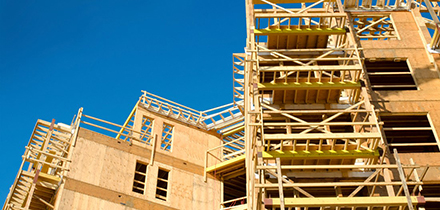The Federal Government has allocated $300m to promote the use of low emissions timber. The program, launched through the Clean Energy Finance Corporation, will promote the use of low-carbon engineered wood materials in apartments and office buildings with the aim of driving down emissions in the construction industry. Source: Timberbiz
Energy and Emissions Reduction Minister Angus Taylor said the forestry industry had great potential to contribute to support jobs in cities and regions while reducing emissions.
“Increased use of low-carbon construction materials like wood products will help achieve our target of net zero emissions by 2050,” he said.
“The production and delivery of building materials account for 28% of emissions in the construction industry globally.”
Assistant Forestry and Fisheries Minister Jonathon Duniam said the investment would help support a strong regional industry while also helping to incentivise wood production in Australia.
“Forest industries make an enormous contribution to rural and regional communities across Australia and employ over 65,000 people,” he said.
“Through our national forest industries plan, we are reducing barriers to investment in our plantation estate, improving Australia’s value-adding capability and delivering opportunities for better returns on investment for our forests.”
The CEFC’s own research released last year shows that replacing 50% of a building’s traditional steel and concrete materials with engineered timber reduces embodied carbon by 11%. In some cases, it’s possible to replace 60% of steel with engineered timber in new buildings.
“It’s terrific the Federal Government through the CEFC is backing forest industry jobs and innovative timber construction to reduce the carbon footprint of the construction sector,” Australian Forest Products Association CEO Ross Hampton said.
“This commitment has the potential to drive the growth of Australia’s emerging engineered timber manufacturing sector and of our timber plantation estate, which already replants 70 million trees a year and needs to grow by a further 1 billion trees over the next decade to meet Australia’s future timber needs.
“As Australia looks for ways to reach net zero by 2050, timber in construction needs to be part of that plan. Wood products store carbon in the built environment over their lifetime meaning that our built environment can become a massive positive carbon sink,” he said.
AFPA NSW CEO Victor Violante said the announcement complemented the NSW Government’s announcement last year to take into account a development’s carbon footprint under a new green building rating system and had the potential to position timber as the low-emission building material for the 21st century.
“NSW has already been leading the way in building with engineered timber, with several impressive examples in Sydney of what is possible.”
Mr Violante said the announcement was the culmination of years of work by forest industries and leaders in green construction to highlight the significant emissions-reduction and aesthetic benefits of building with engineered timber.
He said the benefits would be even greater if the timber is sourced locally.
“It will not only reduce the ‘carbon miles’ and embodied energy of construction, it will also drive new manufacturing jobs in the regions and support the necessary growth of our existing timber plantation estate, which already replants tens of millions of trees every year in NSW,” he said.
Mr Violante said industry is working with the NSW and Federal governments to grow NSW’s plantation estate to ensure we have the resource we need to meet our future timber needs.
Tasmania’s Forest Production Association CEO Nick Steel said that the decision had the potential to drive the growth of Tasmania’s thriving engineered timber manufacturing sector.
“With research showing that our plantation estate has not kept pace with Australia’s timber needs, and as demand for renewable, sustainable products increases, it is critical that the federal and state governments support policies to deliver the one billion extra trees we need to build the low-emission buildings of tomorrow,” Mr Steel said.
Victoria’s FPA CEO Deb Kerr said the federal and state government must prioritise the use of Aussie timber.
“Otherwise, the carbon footprint of imported timber would cancel the good intentions of this initiative as we have seen for Melbourne’s new ANZAC train station that will use wood from overseas for its floating timber canopy,” she said.








